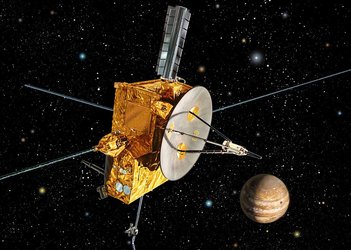

Science & Exploration
Solar wind speeds measured by Ulysses
Before Ulysses, it was know that two types of solar wind existed: one was the fast kind, considered unusual, and the other was the slow wind which was considered more typical. But no one knew how the solar wind varied with solar latitude.
Ulysses found that the fast wind is not so unusual after all: it is basically present throughout the whole 11-year solar cycle and disappears only at solar maximum. At solar minimum (left panel) the fast wind fans out from the poles to fill two thirds of the heliosphere, blowing at an average uniform speed of 750 km/s (see arrows), much faster than the wind that emerges from the Sun’s equatorial zone at 350 km/s. At solar maximum (right panel) the solar wind is more turbulent and irregular.





